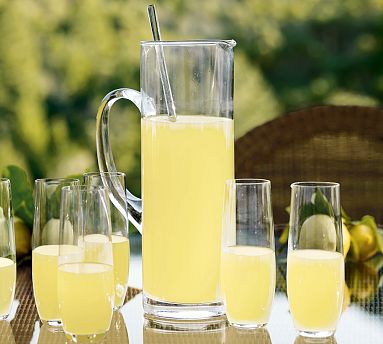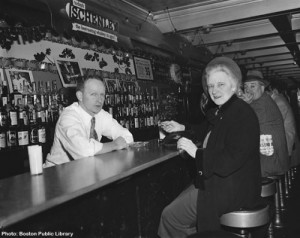As the weather here in Charm City becomes ever more pleasant and temperate, we’ve found that we’re spending a lot more time in the great out-of-doors. Of course, we’re not really the trail hiking and mountain biking type- most of our outdoor activities have more to do with following our bliss than with following a trail, and for us that often means raising a glass. Or three.
As anyone who’s sat outside relaxing for more than 10 minutes can tell you, running inside for anything is an incredible hassle. Man invented coolers because no one wants to take down their feet and leave a cool breeze for a steamy kitchen just to get another beer.
Whether you’re drinking beers in the backyard or cocktails on the veranda, the same principle applies. Yet for some reason when most people build their bars they’ll gather their bottles and even buy some quality barware, but neglect a crucial component to Summer drinking: the cocktail pitcher.
When most people think of cocktails in pitchers, they think of very specific occasions and drinks; the pitcher of margaritas for Cinco de Mayo, a pitcher of mojitos for a holiday cookout, or breaking out the blender for frozen daiquiris. There’s some irony in that though. Most people hope to impress guests with their secret-recipe sangria, only to end up serving it in a crummy old tupperware pitcher which has seen more than its share of dishwasher heat and kool-aid stains. This will never do.
At the Chophouse, not only do we have a dedicated cocktail pitcher, but it occupies a prominent place on our bar. We keep it out in plain view because most dedicated cocktail pitchers are as elegant as they are useful. Whether vintage or modern, standing alone or matched as a set, cocktail pitchers are typically given as much care in their creation as in their design, usually being mouth-blown from crystal or very high quality glass. With most ranging from $20-$50, you can shop with confidence knowing that you’re likely to end up with more than your money’s worth.
Whether it’s sake punch or one of our favorite homespun highballs, we’re not sure how we ever got by without a pitcher. Pick one up for yourself this summer, and we think you’ll agree.



